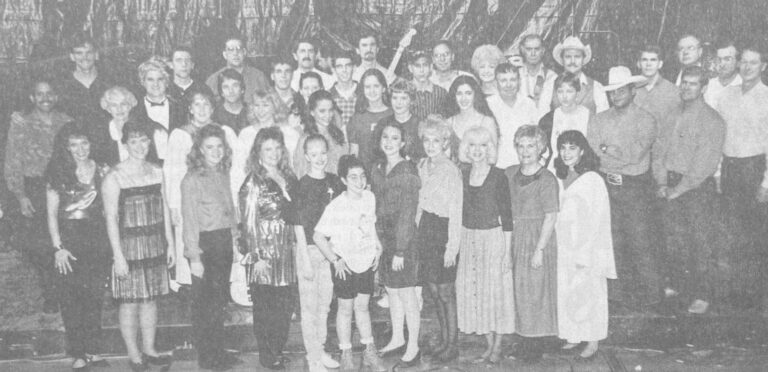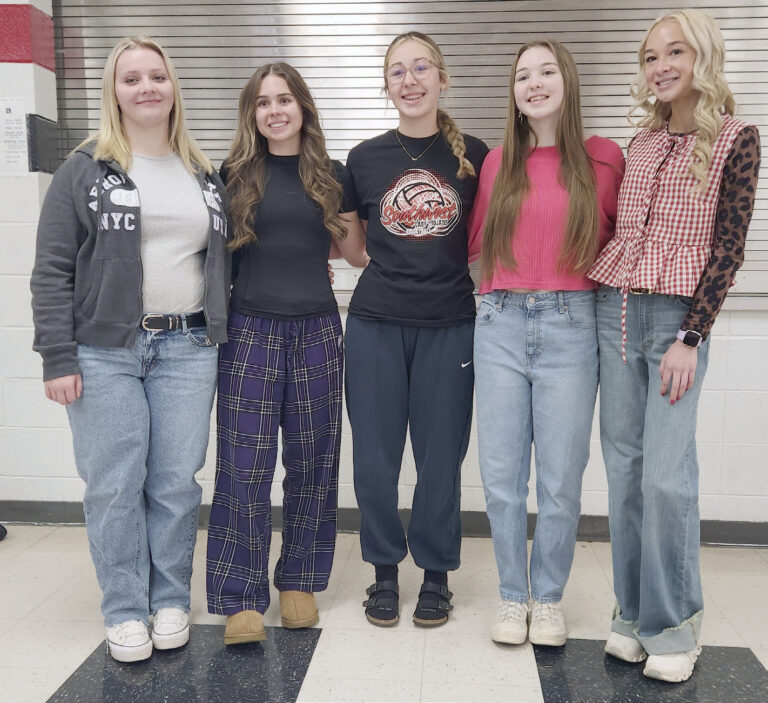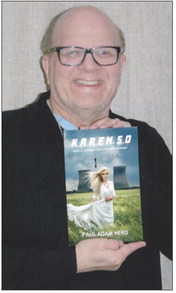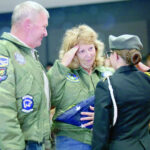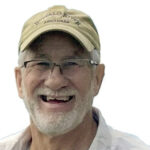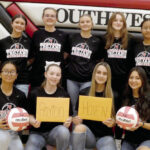Through the Years, May 21
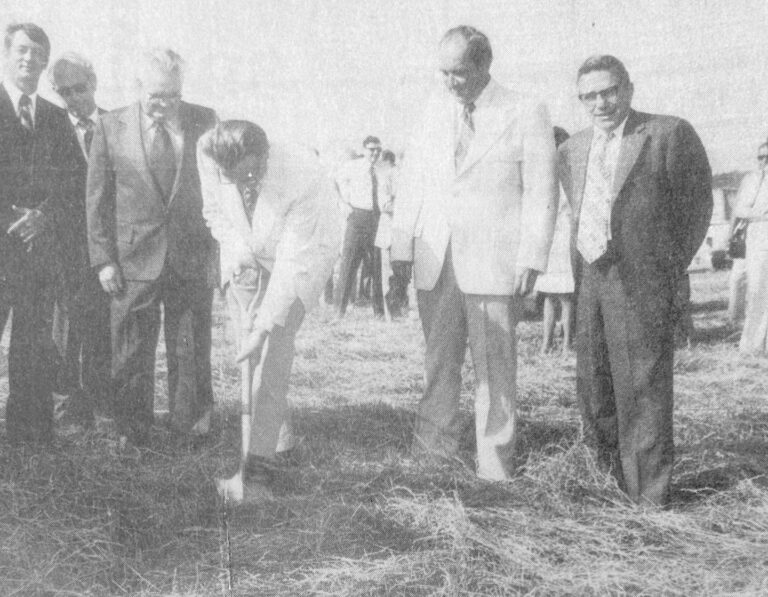
50 years ago
May 28, 1975
— GARRETTS BUY LAND BY CASSVILLE
A Kansas couple, with local family connections, Mr. and Mrs. Melvin Garrett of DeMar, have purchased 17 acres just outside the west city limits of Cassville from Mr. and Mrs. Ray Disler. The Garrets plan construction of a home, custom machine and welding shop on the property. Garrett is a son of John Garrett of Butterfield and a brother of Glen Garrett of Purdy.
— HOLIDAY MOTEL SELLS
Mr. and Mrs. Chuck Waldrop of Belvidere, IIl., have purchased the 16 unit Holiday Motel on South Main in Cassville from Mr. and Mrs. Walt Drozdy. The Waldrops operated a service station operation in Illinois. The Drozdy family have returned to East Chicago, Ind. Waldrop will operate a taxi service out of the motel beginning June 15. He also will have rental car service from the facility. Three children, two school age, will join the family here.
— METRIC SYSTEM SWITCH WOULD MEAN PROBLEMS
What are some of the changes that would take place in Barry County if the United States should switch to the metric system of weights and measures? What would it be like, locally, to be using meters, liters, grams and kilograms instead of yards, quarts and pounds? The question is not just an academic one. A definite step toward that ultimate end has just been taken by Congress in authorizing an expenditure of $40 million over the next four years in the nation’s elementary and secondary schools for instruction in the metric system. The attitude is that the young generation will find the new system much simpler and will take to it readily. The move toward eventual adoption of the system is being pushed by the Department of Commerce, which points out that every major country in the world, except the United States, is now using it. The result is that our international trade is at a distinct advantage, it contends. The switchover would require many adjustments on the part of Barry County residents. A local car owner, for example, would pull into a gas station and ask for 25 liters. He would get 6.6 gallons, its equivalent. With that amount he would be able to travel 150 kilometers because he gets about 6 kilometers to the liter, otherwise known as 14 miles to the gallon. During the course of a year, he and the other 4,700 drivers in the local area have been consuming 2,720 liters per car, on average. They are now managing with somewhat less than that because of the reduced speed limit, 88 kilometers per hour (55 miles), imposed to cut down on fuel consumption. The Barry County house-wife, when she goes marketing, would be buying 500 grams of butter, equal to 1.1 pounds, a kilo of meat for hamburgers, equivalent to 2.2 pounds, and 4 meters (3.6 yards) of dress material. Those in favor of the change to the metric system argue that we cannot stand alone indefinitely in a world that has gone almost entirely in that direction. Those who oppose point to the upheaval it could cause and the billions of dollars the adjustment would entail.
40 years ago
May 29, 1985
— BANDIT HIT COMMERCE BANK BRANCH AT LAKE TUESDAY
A lone bank robber entered the Commerce Bank of Barry County branch at Eagle Rock Tuesday morning and took an undetermined amount of cash. The man, armed with a .45 caliber pistol, left the scene headed north on Highway 86. The incident was reported at 11:15 a.m. Four bank employees were in the facility, just north of Table Rock Lake, at the time of the robbery. Included were manager Gary Dunnam, an employee four weeks; Mary Sue Edwards, who was at the branch during a robbery in the summer of 1981; Tammy Brattin, summer employee, and Denise Hender-son. A bank spokesman said none of the employees were injured. Authorities from federal agencies, the Barry County sheriff’s department, Missouri Highway Patrol and Conservation Com-mission, placed road blocks throughout the area. They also patrolled rural roads. Officers said the man, between 30-35 years of age, was between 5’10”’ and 5’11” and weighed about 175 pounds. The vehicle used in the robbery was a fourwheel- drive unit, bearing Colorado licenses that was apparently stolen in Springfield Monday night. Branch employees at the scene said the individual was wearing a blue cap with the letters USA attached, blue jogging, shoes, military type pants and jacket. While the one man entered the bank by himself, a second person was believed to have been waiting in the vehicle. Commerce’s branch at Eagle Rock, on the east side of Highway 86 just north of the route crossing over Table Rock, was hit four years ago. In the summer of 1981 the J. R. Embree gang, responsible for other area Bank robberies, took an unannounced amount of cash from the branch. There were no customers in the bank at the time of the robbery. The lone bandit talked to no one particular bank employee with instructions to fill two bags he brought with him with funds from the bank. Officers’ attempts to get a local aircraft into the air to aid in search efforts was fouled with the approach of a thunderstorm that struck the area with high winds and hail. The Tuesday incident at Eagle Rock was the second bank robbery in Barry County in 15 months. Community Bank of Shell Knob was robbed, also by a lone bandit in early March last year. Officers speculated the bank robber intentionally hit the branch, about 14 miles from Cassville, after the Memorial Day weekend, when deposits might have been greater than usual by resort-related businesses. The branch of Commerce’s bank in Cassville has been in operation eight years. Bill Easley, bank president at the Cassville facility, said Wednesday, a preventative ,measure used in the branch had worked. This involves dye bombs used in cash drawers that are designed to resemble money packets. Easley said officials knew at least one of the packets exploded in the branch parking lot. The result was that red dye was sprayed on all money in that ,sack. Officials are assuming two others might have also worked effectively, rendering the money taken virtually useless. Roadblocks were lifted Tu day evening, but officers continued the search Wednesday morning in the general Eagle Rock area. Their efforts w directed toward possibly find an abandoned Ford Bron green in color, somewhere in area.
30 years ago
May 17, 1995
— HOW FASCO CAME TO TOWN 20 YEARS AGO
This is the first of a series of three articles that will cover FASCO coming to Cassville 20 years ago. The series will appear in this and two succeeding issues of The Democrat. As Cassville’s largest employer and manufacturer prepares to observe a 20th anniversary and first-ever open house of the sprawling plant, we thought it would be interesting to go back into the years and review some of the events that brought FASCO Industries here. Included in the historical look-see are sidelights that have not been previously included in the print. A first inkling of FASCO’s intentions to expand from their plant at Ozark into another manufacturing facility came to Cassville in one of those strange ways. The executive secretary of the company’s chief executive was the daughter of a Cassville couple. ,During one of her visits to Cassville the daughter told Mr. and Mrs. Dale Rowland, former business and insurance people here, that the company was beginning a search for another plant site after expanding a number of times in Ozark. The Rochester, N.Y. based firm had obviously found a new home in the Ozarks. The Rowlands, who had always been involved through their families (including one-time state senator Raymond Williams), with Cassville progress wasted no time in relaying the message to Chamber of Commerce industrial committee chairman Bob Mitchell. From there a conference followed with Bill Wiley, chairman of the Industrial Development Corporation and Glen Hall, an IDC member. It was decided at this point that Hall should make the initial contact with Pete Weis, Missouri vice-president and FASCO Ozark plant manager. The thrust of the inquiry was to “get Cassville’s name in the pot as a possible location for the expanding firm.” Cassville representatives found Weiss very much aware of the Barry County location, having secured information from a locating service with which the City of Seven Valleys had been associated with years earlier. Weis told the Cassville group he could in fact put this community’s name in the selection process and invited representatives to visit the Ozark plant to confer further. Through the latter part of 1973, Cassville was visited by FASCO officials or representatives a number of times. On many of these visits no local representatives were made aware of their presence. Cassville involvement in the preliminary process included site prospects, utility needs and most importantly, an adequate supply of work force to supply the plant, originally scheduled to employ 400 persons at the end of three years. Most of these questions or problems were answered with dispatch by the five or six Cassville C of C and IDC representatives involved with the possibility. At one stage of the negotiations, Cassville people were surprised with the wealth of information Cassville FASCO people had about this community. It was later learned they had acquired the facts from a Springfield based industrial location group with which Cassville had invested $900 a few years earlier. Having never heard results of the investment, there were those in the community that thought the funds had not been used in the best interest of the area. Enlightenment of the locating group providing information and possibly having put Cassville on the FASCO prospect list earlier than originally thought quickly dispelled these possibilities. Initial efforts between Cassville and FASCO went quite smoothly, with the first public announcement of the possibility made on January 9, 1994 when the C of C and IDC announced they would conduct a labor survey eight days hence for the information of the prospective new company. Announcement of the coming sign-up brought Cassville folks in their first touch with the New York based firm, the electrical motor and blower products they made for industry, business and the home. These included motors and control devices for furnaces, tape recorders, copying machines, electric typewriters, ice cream freezers, hair dryers, automatic garage door openers, central vacuum systems, dehumidifiers, basement sump pumps, automobile turn signals, headlights, spot lights, windshield wipers and transmission and pollution control devices for auto manufacturers. Products from FASCO, Cassville area residents learned, are in furnaces and air conditioning systems, copying machines, ventilators and electric fireplace systems, copying machines, vents. Two plants in North Carolina made of these products, especially ceiling fans that have become so popular in recent years. Mayor of Cassville at the time was Bill LeCompte, who was working closely with Mitchell and Wiley and IDC representatives, the late Kenneth Johnston, Jack Byrd and Doyle Thomas. Initial legal arrangements were funneled through IDC attorney Joe R. Ellis. Labor potential survey processes urged a personnel appearance if at all possible for those coming to work with the plant. Local officials were certain, during the early processes, that a number of people former residents included, would be interested in becoming part of the sign-up. For those without the possibility of being here, the C of C established a mail-in signup form. First announcements of the FASCO possibility in Cassville also advised residents of the possible need for bond issues for issuance of revenue official announcement industrial bonds and utility improvement issues that could be involved in a major manufacturing complex. The January 16, 1974, issue of the Cassville Democrat in the lead of a story about the survey outlined that the site was available and acceptable with FASCO. The site had not been announced previously by IDC and C of C negotiators. A 12-hour period was set aside at the Community Center to receive those who would be interested in employment. Special emphasis was placed on those with manufacturing experience that might be residing elsewhere but would be interested in becoming part of the employment force of the new plant. Cassville also learned in the sign-up arrangements that a similar survey had been conducted in West Plains the previous week in which 1,500 persons had expressed interest in employment should the plant locate in that community. The Howell county effort was considered good by the company. Target of the sign-up would be an original figure of 50 persons, growing to 400 in the first year of operations. Assistance during initial stages of the prospect came from other Cassville plants, including Jumping-Jacks Shoes who opened employment statistics for FASCO to indicate quality and attendance figures for this area. Cassville city hall was to be turned over entirely to the company for the sign-up. Individual offices would be made available for company officials to conduct private interviews with selected individuals. With 1,400 persons completing application forms the first day, Cassville and FASCO officials agreed at the conclusion of the initial effort that another session should be scheduled. Virtually every community in this area was represented as persons expressed interest at becoming employees of the new firm. A number of persons from outside the area, once residents of Barry County communities made arrangements to be on hand for the effort. FASCO officials, obviously impressed with the turnout of prospective employees, expressed their approval throughout the day of the quality level of those completing forms. ,With another 200 prospective employees signing forms the second effort, Cassville began preparation of an extensive presentation that would be forwarded to New York headquarters of the firm and presented to area officials. The outline of Cassville statistics, letters of commitment from various utilities and organizations and details of possible services was prepared by the C of C with Mitchell and Mr. and Mrs. Bill Ward coordinating the booklet. Profiles of the community were also provided by Missouri Economic Development. Virtually every walk of Cassville life was presented in the folder. A cover design was provided by Mrs. Kay Edmondson. Chamber of Commerce directors through the process, included J. A. Hull, vice-president; Steve Burch, treasurer; Carter Koon, Kenneth Johnston, R. G. Fisher, Verdayne Riddle, Jim Patterson, Dale Rowland, Jack Byrd and Carl Borensen. During the interim between the end of 1973 and a final decision, Cassville got in a position to accomplish some planning for improvements that would go along with another major manufacturer coming to town and at the same time provide better services for the people. Mayor LeCompte, council members W. E. Leonard, Marlee Edie and Gene Schlichtman acted in a session to proceed with plans for a second 150,000 gallon water storage tower, drilling a new well, waste water plant changes and lift station up-dating were all included. While a decision slated for February never came, April 1, 1974 was no April Fool Day in the history of Cassville. It was a Monday when verbal acceptance of Cassville as the new FASCO site came from New York, via way of Ozark and Pete Weis. The word was FASCO was coming to Cassville with just a couple of more hurdles to clear. Announcement of the acceptance of several months efforts by Cassville officially came in a Tuesday morning April 2 breakfast meeting of the C of C and IDC, with respective presidents Mitchell and Wiley, mayor LeCompte and attorney Ellis outlining details of the agreement. The processes of planning from November the year before was about to be completed.

